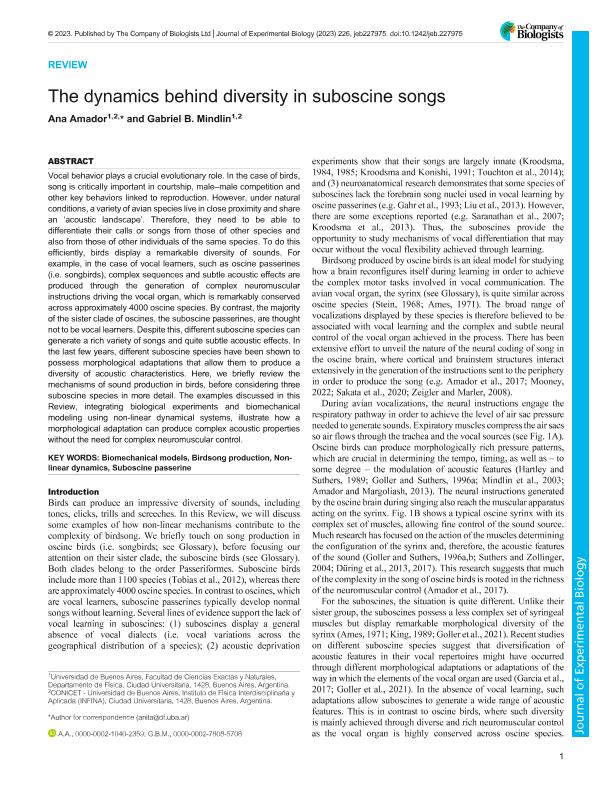Artículo
The dynamics behind diversity in suboscine songs
Fecha de publicación:
06/2023
Editorial:
Company of Biologists
Revista:
Journal of Experimental Biology
ISSN:
0022-0949
Idioma:
Inglés
Tipo de recurso:
Artículo publicado
Clasificación temática:
Resumen
Vocal behavior plays a crucial evolutionary role. In the case of birds, song is critically important in courtship, male–male competition and other key behaviors linked to reproduction. However, under natural conditions, a variety of avian species live in close proximity and share an ‘acoustic landscape’. Therefore, they need to be able to differentiate their calls or songs from those of other species and also from those of other individuals of the same species. To do this efficiently, birds display a remarkable diversity of sounds. For example, in the case of vocal learners, such as oscine passerines (i.e. songbirds), complex sequences and subtle acoustic effects are produced through the generation of complex neuromuscular instructions driving the vocal organ, which is remarkably conserved across approximately 4000 oscine species. By contrast, the majority of the sister clade of oscines, the suboscine passerines, are thought not to be vocal learners. Despite this, different suboscine species can generate a rich variety of songs and quite subtle acoustic effects. In the last few years, different suboscine species have been shown to possess morphological adaptations that allow them to produce a diversity of acoustic characteristics. Here, we briefly review the mechanisms of sound production in birds, before considering three suboscine species in more detail. The examples discussed in this Review, integrating biological experiments and biomechanical modeling using non-linear dynamical systems, illustrate how a morphological adaptation can produce complex acoustic properties without the need for complex neuromuscular control.
Archivos asociados
Licencia
Identificadores
Colecciones
Articulos(INFINA)
Articulos de INST.DE FISICA DEL PLASMA
Articulos de INST.DE FISICA DEL PLASMA
Citación
Amador, Ana; Mindlin, Bernardo Gabriel; The dynamics behind diversity in suboscine songs; Company of Biologists; Journal of Experimental Biology; 226; 12; 6-2023; 1-10
Compartir
Altmétricas




